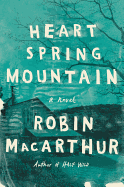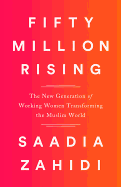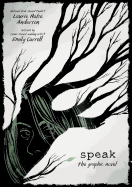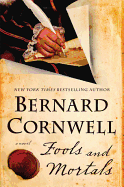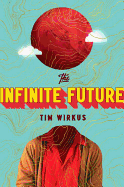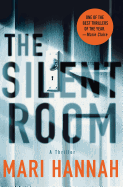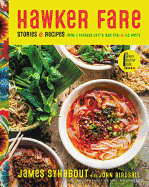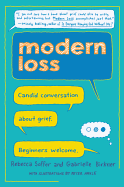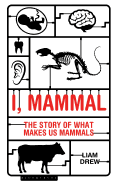Friday, February 9, 2018
In truth, Valentine's Day is a bit of a needy holiday. There are the reservations to be scheduled. Cards to be bought. Flaming desserts to be made. And if you're single? More energy may be required to maintain your cool during this chocolate-covered 24-hour period than the rest of the holidays combined. Let's eliminate the stress and, instead, pick up a historical romance. The happily ever after is reached by simply turning the pages. Low impact, indeed! Beverly Jenkins is known for her powerful portrayals of black characters and her latest, Tempest (Avon, paperback), is an Old West–meets–new love tale. Mail-order bride Regan Carmichael thinks she has everything figured out--until she meets her intended, widower Dr. Colton Lee, who's sure his days of romance are behind him.
Beverly Jenkins is known for her powerful portrayals of black characters and her latest, Tempest (Avon, paperback), is an Old West–meets–new love tale. Mail-order bride Regan Carmichael thinks she has everything figured out--until she meets her intended, widower Dr. Colton Lee, who's sure his days of romance are behind him.
 Set in Venice, Victoria Alexander's The Lady Travelers Guide to Larceny with a Dashing Stranger (Harlequin, paperback) finds Lady Wilhelmina Bascombe searching for a priceless family treasure in order to shore up her dwindling bank account. There's only one problem: Dante Augustus Montague believes the painting belongs to him, and he'll stop at nothing to retrieve it--even going so far as to fall in love.
Set in Venice, Victoria Alexander's The Lady Travelers Guide to Larceny with a Dashing Stranger (Harlequin, paperback) finds Lady Wilhelmina Bascombe searching for a priceless family treasure in order to shore up her dwindling bank account. There's only one problem: Dante Augustus Montague believes the painting belongs to him, and he'll stop at nothing to retrieve it--even going so far as to fall in love.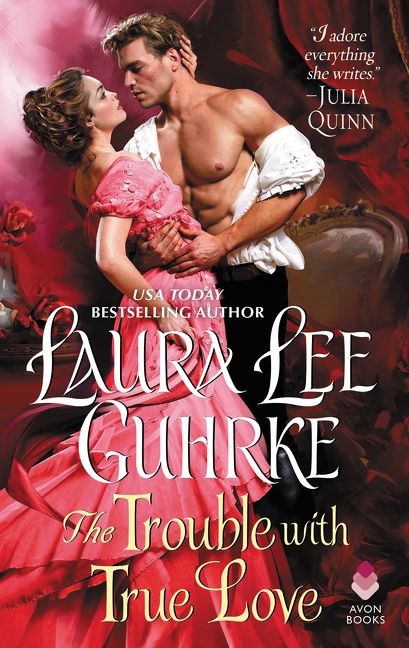 Laura Lee Guhrke offers up a delicious wallflower and rake pairing in The Trouble with True Love (Avon, paperback). Poor prim Clara Deverill ends up right in the path of Rex Galbraith, reprobate par excellence. Will she give way, or stand up for love? Suzanne Enoch's Scottish-set historicals never disappoint, and A Devil in Scotland (St. Martin's, paperback) is a fine example of why. Lush settings, rapier wit and two well-drawn characters will leave you sighing with delight long after this second-chance-at-love story has ended. --Stefanie Hargreaves, editor, Shelf Awareness for Readers
Laura Lee Guhrke offers up a delicious wallflower and rake pairing in The Trouble with True Love (Avon, paperback). Poor prim Clara Deverill ends up right in the path of Rex Galbraith, reprobate par excellence. Will she give way, or stand up for love? Suzanne Enoch's Scottish-set historicals never disappoint, and A Devil in Scotland (St. Martin's, paperback) is a fine example of why. Lush settings, rapier wit and two well-drawn characters will leave you sighing with delight long after this second-chance-at-love story has ended. --Stefanie Hargreaves, editor, Shelf Awareness for Readers
Heart Spring Mountain
by Robin MacArthur
"How easy to pass along our flaws--our anger, sorrow, reserve, withholding," says Deb, a middle-aged hippie, to her 20-something niece, Vale, in Robin MacArthur's gorgeous first novel. Heart Spring Mountain opens in 2011 New Orleans. Tropical Storm Irene has hit Vale's home state of Vermont, and she has just received word that her mother, a heroin addict she hasn't seen in eight years, walked out into the storm and hasn't been seen in days. Though apprehensive, Vale decides to return home, where she reconnects with her aunt, her cousin and her grandmother. As they join forces to search for their missing family member, they discover that their family secrets run much deeper than addiction.
The novel moves back and forth through time to show how three generations of women inherited the traumas of their ancestors: addiction, poverty and perhaps (if Vale's mother's stories about their Native origins are true) dispossession and racist oppression. Each chapter unfolds from the perspective of a different character, a structure that lends the story an expansive richness. MacArthur further underscores the importance of history and relationships by drawing parallels between the women's family history and the traumas affecting entire populations: "the storm and the opioid crisis... are, in some ways, symptoms of the same illness," Deb thinks. "Pharmaceuticals and crude oil. Hurricanes and heroin. Flooding and Fentanyl. All of them making their way upstream." Lyrical and faintly political (but never pedantic), Heart Spring Mountain is a timely wonder of a debut. --Amy Brady, freelance writer and editor
Discover: A lyrical and moving novel about three generations of women who reconnect when one of their own goes missing.
Fools and Mortals
by Bernard Cornwell
So much ink continues to be spilled about William Shakespeare that often it takes a novel perspective to bring out something strikingly new about the Bard. In Fools and Mortals, Bernard Cornwell finds that perspective in the form of a sibling, Richard. The author of the Sharpe and Saxon Tales series uses the somewhat devilish younger Shakespeare as a vehicle for a fun, amusing caper about the writing and first production of A Midsummer Night's Dream.
While a part of William's theater company, Richard is barely on speaking terms with his brother. Playing women's parts (ladies were banned from being actors at that time), but quickly growing too old for those roles, Richard craves a greater place in his brother's world. When a play written for the wedding of a patron's granddaughter is announced, he jumps at a chance to play a man, and is accidentally thrust into a conspiracy to steal the play and ruin his brother's career.
Fools and Mortals is silly fun, a thrill ride through Elizabethan England where actors were knaves and puritanical mores were on the rise. In his acknowledgements, Cornwell notes that much of the book is fictitious, and that's the best way to read it. Those looking for a historical record of Shakespeare should head to the biographies, but for anyone wanting to read about the Bard dueling with swords and wooing bar-maidens, Fools and Mortals is a good bet. --Noah Cruickshank, adult engagement manager, the Field Museum, Chicago, Ill.
Discover: In Fools and Mortals, the author of the Sharpe and Saxon Tales series tells a fun, fanciful story of how A Midsummer Night's Dream came to be.
The Infinite Future
by Tim Wirkus
In an ambitious second novel, Tim Wirkus (City of Brick and Shadow) opens with a foreword introducing himself as the messenger. He knew narrator Danny Lazlo, Wirkus tells the reader, as an enigmatic classmate at Brigham Young University. The two were briefly reacquainted when Danny gave Wirkus a manuscript by obscure Brazilian science fiction writer Eduard Salgado-MacKenzie entitled The Infinite Future.
Danny first hears about Salgado-MacKenzie during a research trip to São Paulo, while working on a flailing attempt at the Great American Mormon Novel for the highly suspect Young Religious Novelist Grant. Librarian Sergio Antunes, Danny's liaison, introduces him to Salgado-MacKenzie's stories of spaceship captain Irena Sertorian and her valiant crew, who travel the universe facing deadly peril and ethical dilemmas in the style of classic Star Trek. Sergio, a lifelong fan, also shows Danny a book proposal indicating the existence of an unpublished Salgado-MacKenzie novel. Soon, however, Sergio renews contact, claiming to have found a lead on Salgado-MacKenzie's whereabouts through Dr. Harriet Kimball. The feminist scholar was excommunicated from the Church of Latter-Day Saints and once translated some of Salgado-MacKenzie's work. She regrets never finding out whether he was "a raving crank or one of the greatest minds of his generation." Together, the three undertake a journey to find the man at the heart of the mystery and seek out The Infinite Future in the most unlikely of places.
As Wirkus the character muses, "any story that creates a more potent and delightful version of itself in the reader's memory" has pulled off a magical metamorphosis, and Wirkus the author has given us just such a story. --Jaclyn Fulwood, blogger at Infinite Reads
Discover: The Infinite Future follows a man in search of a mysterious Brazilian author and also contains that author's long-lost unpublished science fiction novel.
Mystery & Thriller
The Silent Room
by Mari Hannah
Did he jump or was he pushed? Northumbria's Detective Sergeant Matthew Ryan frequently fields this question, but it's never been more pressing. Ryan's boss and friend Detective Inspector Jack Fenwick has been accused of harboring illegal firearms, and is caught on camera fleeing the prison van that was taking him to jail. Fenwick appears to be escaping, but Ryan is convinced his friend was abducted.
Ryan intends to aid in the investigation; instead, Professional Standards' John Maguire, acting on a personal grudge, suspends Ryan on the grounds that he was AWOL when Fenwick disappeared. Maguire's fair-minded boss Eloise O'Neil supports the suspension, feeling obliged to consider the possibility that Ryan is Fenwick's co-conspirator.
Determined to find Fenwick's missing notebooks and clear his friend's name, Ryan is hamstrung by his lack of access to the police station's incident room. Fortunately, Fenwick has earned loyalties beyond Ryan's: their retired colleague Grace Ellis volunteers her home as a base of operation; it was once a police house, and when she bought the place, the incident room's hardwiring was still connected. Her ex-lover, a former MI5 operative, rounds out the undercover team, presiding over the resurrection of what Grace calls the "silent room."
The first stand-alone thriller from 2017 Dagger in the Library Award-winner Mari Hannah, The Silent Room balances a crime novel's obligation to be spine-tingling with a literary novel's acute sense of place. Readers get to know Northumbria and its environs, as well as Norway, where things get really dicey, especially for Ryan and O'Neil. --Nell Beram, freelance writer and author
Discover: Detective Sergeant Matthew Ryan faces obstacles to clearing his boss's good name when his own gets smeared.
Food & Wine
Hawker Fare: Stories and Recipes from a Refugee Chef's Isan Thai and Lao Roots
by James Syhabout and John Birdsall
Hawker Fare: Stories and Recipes from a Refugee Chef's Isan Thai and Lao Roots is a vivid, inspiring collage of chef James Syhabout's life, family and the flavors of his youth.
Syhabout earned two Michelin stars for his Oakland, Calif., restaurant Commis, but his debut cookbook sets out to instead highlight dishes he serves at his restaurant Hawker Fare--the Lao and Thai dishes he grew up eating.
Sticky rice and padaek, fermented fish sauce, provide the foundation for many. Syhabout builds on these with myriad colorful and flavorful recipes for snacks, tum som, noodles and soups, laap and goi, meats, aws and moks, sauces and condiments, as well as desserts. Standouts include Lao Green Papaya Salad, Khao Mun Gai (Poached Chicken and Rice) and Aromatic Fish Salad Laap.
An introduction by Anthony Bourdain cements Syhabout's celebrity, but his work sparkles on its own. Expletives pepper his writing, also seasoned with creative verbs. On his Coconut Milk and Tapioca Soup with Melon and Crushed Ice, he writes that his mom would "freestyle it." He includes advice on preferred brands for prepared ingredients, and where to find fresh produce and meat. Some can be difficult to get in Western markets, he admits, like buffalo skin ("Honestly, even I have a hard time sourcing this stuff"), while others are easy, such as lemon grass ("easy to find these days at all Asian markets [or] Whole Foods"). Ultimately, he says, "If the label says Thailand or Vietnam, it's probably legit." As legit, no doubt, as Hawker Fare. --Katie Weed, freelance writer and reviewer
Discover: Michelin-starred chef James Syhabout shares recipes and stories from the Isan Thai and Lao cuisines of his childhood.
Business & Economics
Fifty Million Rising: The New Generation of Working Women Transforming the Muslim World
by Saadia Zahidi
According to Saadia Zahidi of the World Economic Forum, Muslim women are going to work in greater numbers than ever. Across the Middle East and North Africa, women from a range of sects, generations and families are launching careers outside the home. They are entrepreneurs, service workers, clothing designers, corporate executives. Their growing economic power is revolutionizing their homes, families and societies. In Zahidi's first book, Fifty Million Rising, she delves into these shifting cultural, social and economic patterns.
Zahidi, who grew up in a Pakistani Muslim family, has an economist's love of data. Her narrative is packed with statistics on subjects including marriage, divorce and childbirth rates across the Muslim world, as well as the number of companies with female executives. But her primary focus is the stories she has captured: vivid anecdotes from women (many, but not all, millennials) who are blazing new paths. Sharing their journeys and struggles are women like Mozah, who runs a catering business out of her home in Cairo; Sara, a Pakistani doctor who founded a telemedicine start-up; and Diajeng, the CEO of an online fashion platform. Although many of them face financial challenges, pressure from male relatives and other obstacles, they are determined to succeed. Zahidi explores the effects of their success on family structures, community norms and the potential for future generations of Muslim women, while celebrating their "grit, resilience and a hunger for achievement." Fifty million working Muslim women are indeed rising--and so are their numbers. --Katie Noah Gibson, blogger at Cakes, Tea and Dreams
Discover: Saadia Zahidi's first book explores the stories, statistics and culture-shifting power of a new generation of working Muslim women.
Psychology & Self-Help
Modern Loss: Candid Conversations About Grief. Beginners Welcome
by Rebecca Soffer and Gabrielle Birkner
Rebecca Soffer and Gabrielle Birkner's Modern Loss follows the encouraging success of their online movement of the same name, a much-needed forum for people to engage in open, authentic dialogues about grief. In this eclectic collection of essays, more than 40 contributors share their insights on bereavement with a respectful balance of humor and honesty that focuses on the loss one actually feels instead of what society expects one to feel. The message comes across loud and clear: grief should be experienced in whatever way feels genuine and right, whether or not it is conventionally acceptable.
Modern Loss is divided into sections highlighting topics related to the grieving process. In the section "Data," Soffer coins the phrase "emotional digital sneak attack": seeing an image on Google Earth of one's deceased father mowing the lawn of one's childhood home, for example. Such "digital dust" sometimes can cause anguish, as when Soffer received an e-mail from her deceased mother offering to bake her favorite chicken dish. The message somehow landed in her inbox a year after her mother's death. At the same time, though, having access to such history of a deceased loved one can be comforting and precious.
Soffer and Birkner's easy conversational tone encourages the reader to explore what it means to build happy, healthy and resilient lives despite the repeated shattering of normalcy that is part and parcel of bereavement. To read these stories is to appreciate the relief that comes with sharing experiences and their attendant emotions with others on the same journey. --Shahina Piyarali, writer and reviewer
Discover: A fresh, original and often entertaining approach to living a meaningful life while dealing with grief and loss.
Science
I, Mammal: The Story of What Makes Us Mammals
by Liam Drew
Liam Drew's first book, I, Mammal: The Story of What Makes Us Mammals, is an infectiously enthusiastic introduction to mammalian biology. Drew takes the reader along on an idiosyncratic survey of the various attributes and unusual physical features--live birth and the scrotum, for example--that, taken together, help to define why mammals are mammals. Far from a dry list of mammalian characteristics, I, Mammal looks to Drew's personal life, especially his experience of fatherhood, to show how all of our lives are shaped by these distinctive features.
Helpfully, Drew also possesses abundant wit and a sly sense of humor. On the question of why mammals developed scrotums, Drew writes: "It's like a bank deciding against a vault and keeping its money in a tent on the pavement." That Drew then goes on to debate the merits of the long-popular and somewhat technical "cooling hypothesis" is emblematic of the author's approach. Drew is an entertaining writer that never gives short shrift to his complex subject matter.
Behind Drew's occasional silliness lies a serious, awe-filled appreciation for unlikely products of evolution, especially the platypus. The author's delight in sharing bizarre facts about humans and our evolutionary cousins is tempered by his insistence that "what we define as individual traits are always bound together, and it is within these bonds that a meaningful notion of mammalianness can be found." I, Mammal positions human beings within a vast, incredible family tree. --Hank Stephenson, bookseller, Flyleaf Books, Chapel Hill, N.C.
Discover: I, Mammal provides a witty guided tour of attributes that define mammals, as well as a distinctive perspective on humans and our evolutionary heritage.
Nature & Environment
A Forest in the Clouds: My Year Among the Mountain Gorillas in the Remote Enclave of Dian Fossey
by John Fowler
As a young pre-veterinary college student, John Fowler applied for and was accepted into a year-long research assistantship with Dr. Dian Fossey at Karisoke Research Center in Rwanda. Fowler knew little about Fossey at the time but was enticed by the rare opportunity intimately to study the mountain gorilla in its African habitat. When he left the United States in January 1980, he anticipated exciting adventures and priceless education, but what he found instead was a hostile environment led by an alcoholic struggling to keep her position before her murder in 1985.
A Forest in the Clouds is Fowler's firsthand account of life in Fossey's research camp, nestled among the Virunga Volcanoes. It paints a dramatically different picture from the acclaimed primatologist's articles in National Geographic or her book, Gorillas in the Mist. It also illustrates an amazing corner of the world and a spectacular species only a few DNA chain links away from humans.
Fowler's raw honesty, his awe and respect for the natural world and his talent for storytelling make A Forest in the Clouds both mesmerizing and terrifying. Humorous anecdotes, like Fowler's experience having a gorilla pee on him in the night, balance the grim realities of wildlife--and human life--he must face. Readers will feel transported to the wilds of Africa, where Fowler educates them on raising a baby gorilla, camp cuisine and surviving the greatest challenge, Dian Fossey. A Forest in the Clouds is a brave and beautiful memoir any animal lover will devour. --Jen Forbus, freelancer
Discover: Decades after her gruesome murder, Dian Fossey's research assistant answers the question, "What was she like?"
Poetry
Pray Me Stay Eager
by Ellen Doré Watson
A boisterous collection of poems both formal and free, rhymed and dissonant, Pray Me Stay Eager is a wise and whimsical tribute to aging with lust and wonder. Director of the Poetry Center at Smith College, Ellen Doré Watson (Dogged Hearts) addresses subjects as diverse as flushing intrusive ladybugs down the toilet and fantasizing romance with a fellow airplane passenger in the poem "LAX to BDL" ("I only see us with our clothes on--real lust lately/ gone underground from lack of habit & hope... I hang back as we deplane, and here he/ comes, looking rumpled, sluggish, kind of watery, just like me"). Her narrators are mothers, ex-wives, daughters and lovers musing on the earthy roots of the abstract and the abiding verities of the mundane.
The source of the collection's title, the disjunctive poem "Not a Thing" captures the prayerful nature of its several odes and what she calls "field guides." It begins with a cautionary declaration: "I haven't been known to address the Lord... it's a human wow I'm after the shiver-spank/ of a Zulu choir." Watson's supplicatory poems not only "pray for eager," but also advise us as we age to "praise longing, it's what keeps us un-/ finished" and accept that "maybe we'll never again be the selves/ we remember, but isn't complication fun? ...who knows/ the wonders to come of our rack and ruin." In "Ode to Awe," the fitting final poem of this vibrant collection, Watson optimistically twists the definition of the abstraction awe from "outsized excitement" to "outside" and concludes: "If I ever see God,/ it'll be out of doors./ I turn the mat around/ --it says Welcome/ as I leave." --Bruce Jacobs, founding partner, Watermark Books & Cafe, Wichita, Kan.
Discover: Ellen Doré Watson's witty, warm and agile poems explore the roots of abstraction and the illuminations of the ordinary.
Children's & Young Adult
Speak: The Graphic Novel
by Laurie Halse Anderson and Emily Carroll
Laurie Halse Anderson's 1999 young adult novel, Speak, is a seminal work in young adult literature that helped to pave the way for many of the incredible works we've seen in the almost 20 years since its publication. This new edition, Speak: The Graphic Novel, adapted by Anderson herself and illustrated by Eisner Award winner Emily Carroll, is as painful as it is prepossessing.
Right before her freshman year at Merryweather High, Melinda attended an end-of-summer party. For reasons unknown to her peers, Melinda called the police and busted the party. Now, on her first day at her brand-new school, she is already an outcast, despised by almost all of her classmates, including Rachel, her "ex-best friend." Melinda, dealing with a trauma that is left unspoken for most of the work, quickly draws inside of herself, becoming small and almost completely silent. "It's getting harder to talk," she thinks, "My throat is always sore, my lips raw, like I have some kind of spastic laryngitis." She falls into a deep depression, feeling as if there is "a beast" in her guts, "scraping away at the inside of [her] ribs." The illustrations accompanying this thought--a wolf, bare tree limbs, blood drops--are all black, pressing in on the text, surrounding and suffocating it.
Using pencil and charcoal, the entire graphic novel is illustrated in grayscale, allowing the work to be as visually dark as its content. Strong lines, overlapping panels and clever use of blank space show Carroll's skill in creating Melinda's stifling, near-silent world. Speak: The Graphic Novel is hypnotizing and heart-breaking, with the kind of empowering finish that unshackles protagonist and readers alike. --Siân Gaetano, children's and YA editor, Shelf Awareness
Discover: Laurie Halse Anderson's 1999 award-winning novel is reinvented in graphic novel form with illustrations by Eisner Award winner Emily Carroll.
A Couch for Llama
by Leah Gilbert
This charming and silly picture book begins by announcing that "[t]he Lago family's couch was very well-loved." But now, after playing host to many cozy activities, including "snuggling... fort building, and hiding and seeking," it's clear that the couch has seen better days. The family decides it's time to replace it. After trying a couch that is "too big" and one that is "too small," the Lago family happily finds a replacement that is "JUST RIGHT." They pack their perfect new couch on top of their car and head home. Unfortunately, before they get there, the new couch flies off the car and into a field, where it lands at the feet of a rather startled llama.
Llama is intrigued. He sniffs and brays and tries to share his lunch, but the couch doesn't say anything or seem very hungry. It doesn't taste good either, so Llama concludes the couch is useless. But, just as the Lago family discovers their couch is missing, Llama realizes his new couch is not as boring as it seems.
The illustrations showing Llama making friends with the couch are not to be missed. Llama has a big round belly and teeny-tiny legs, making his jumping and twirling very comical indeed. He exudes plenty of emotion, moving from a "stubborn, couch-loving kind of llama" to a dejected, couch-less llama in a jiffy as the family takes away his "smooshy-mooshy, fluffy-puffy cushions" that he "completely" loves. A Couch for Llama manages to be both tender and action packed, and shows the rewards of spreading the happiness around. It's a thoroughly entertaining read, especially while ensconced on a suitably comfortable couch of one's own. --Lynn Becker, blogger and host of Book Talk, a monthly online discussion of children's books for SCBWI
Discover: When a family tries to bring a perfect new couch home from the store, it falls off the car, landing at the feet of a very startled llama.
American Panda
by Gloria Chao
Mei Lu is a 17-year-old Taiwanese-American freshman at MIT. According to her parents, her life is all planned out: she will become a doctor and marry a Taiwanese Ivy League graduate. But what they don't know is that she's a germophobe ("bacteria-ridden patients" make her "skin crawl") who feels more at home in a dance studio than an operating room. She also has a crush on a "nerd-hot" Japanese-American boy. Straddling two worlds without fully belonging to either of them, Mei attempts to navigate her new independence while still trying to respect her immigrant parents' hopes and dreams.
In American Panda, Gloria Chao skillfully and effectively puts the reader in Mei's shoes, highlighting how it feels to be a first-generation American. One notable way she does this is through transcripts of voicemails from Mei's mom, aunt and grandmother that include gossip ("I heard from Mrs. Tian who heard from Mrs. Lin..."), guilt trips ("Why you never pick up? I know you're not in class!") and health and beauty tips ("I read about these spoons that fight fat.... Your belly needs it!"). Sprinkled between chapters, these snippets simulate what it's like to be on the receiving end of constant criticism and advice, albeit well-meaning. Additionally, the Mandarin words that are scattered throughout--constant reminders that children of immigrant parents are living in two worlds--further cement the reader in Mei's experience.
Between embarrassingly funny scenes of Mei's mother fussing over her and emotionally charged, tense familial interactions, there's a sweet narrative about Mei falling in love and coming into her own through dance. It's in these in-between moments, when Mei's true self shines, that Chao does some of her best work. --Lana Barnes, freelance reviewer and proofreader
Discover: An eye-opening, hilarious and sometimes heartbreaking story of a Taiwanese-American girl's struggle with breaking tradition to be herself.


